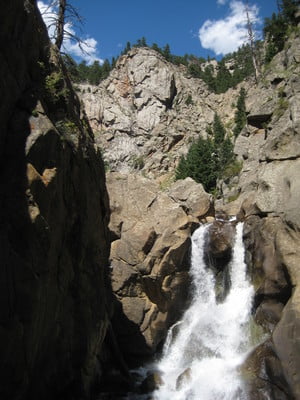One of the things that you often hear, living in Boulder, is that if you can’t find something fun to do in a town like this then there’s something wrong with you. Boulder is home to a major university, a sophisticated beer culture, a deep, conscientious and trendy commitment to all things fair trade, free range, organic and conflict-free and also a passion for fitness and the outdoors. Boulderites love their all-weather, all-terrain vehicles-particularly Subarus. They go to gyms: the YMCA, Movement (a local rock climbing gym) and 24 Hour Fitness. Most of all, they head into the Rocky Mountains for a whole range of activities. In summer they hike, climb, boulder, swim and go tubing down Boulder Creek. In the winter they snowshoe, ski, snowboard and even go sledding and snow tubing in Chautauqua Park. Of course, beyond the town of Boulder, there’s a host of attractions of varying climates, altitudes and population demographics. Denver is 45 minutes away. Vail and Aspen can be reached in a matter of hours. A quick jaunt up 25 or 76 will bring you into Wyoming or Nebraska, grassy and sparsely populated lands of the plains that could not contrast more markedly with the mountains of Boulder.
This article presents a list of the more cheap and convenient attractions in and around Boulder.
1. Boulder Canyon – In the center of town Canyon Boulevard traverses Boulder from east to west, heading up the gradual incline of the Front Range until city limits. After that the street becomes Boulder Canyon Drive for the 18 mile winding way that climbs 3000 feet to the town of Nederland. The drive itself is gorgeous, passing through gorges, along side the creek and through one tunnel. On the Boulder end of the road there are bike paths and running trails. Halfway to Nederland (called Ned by locals) Boulder Falls is a popular attraction. The falls, which stand in a treacherous canyon that has claimed the life of more than one climber, are at the end of a perfectly safe and well-marked path of 0.1 miles. There are several turnoffs on Canyon Drive that allow access to the creek. Although at ice-out the water is undoubtedly treacherous, in June you can wade easily against the calf-deep lazy current and enjoy the coolness of the water. Approaching Nederland you will first encounter Barker Dam, a creaky century-old work of concrete and steel that holds back a sizable reservoir. The approach to Nederland along the reservoir offers a dramatic scene of a mountain village nestled at the end of a lake that is reminiscent of something you might find in the Alps.
2. Chautauqua Park, Gregory Canyon and Flagstaff – These three attractions can be found along Baseline Road. Chautauqua offers access to the Flatirons, the sandstone rock faces driven up from the bedrock by plate tectonics that are emblematic of Boulder. Chautauqua has hiking paths that lead to the base of the Flatirons where climbers can scale these cliffs or the Royal Arch, the natural arch at 7000 feet that offers a towering view over the entire Front Range. Flagstaff Mountain, which can be accessed just by following Baseline, climbs high above Boulder, offering a view of the Rockies to the west and the entire county to east, even beyond to Denver. The climb up Flagstaff by car, which winds around several hair-pin turns and switchbacks, can be a stirring introduction to the Rockies. Gregory Canyon is a bowl-shaped valley filled with hiking trails that is due south of Flagstaff.
3. Sanitas Ridge – At the end of Mapleton, is Sanitas Ridge, a craggy climb to a long rocky ridge that overlooks North Boulder. The trail is arduous but offers not only an amazing view but also a wide variety of local plants: wild flower, cacti and the hardy plants of the high plains. The trees are also home to mountain jays, larger but equally colorful versions of blue jays. Sanitas is named for a sanitarium that used to stand on the ridge, offering clean, dry mountain air for those suffering from tuberculosis.
4. NCAR – The National Center for Atmospheric Research is located at the top of Table Mesa and is the headquarters for the University Corporation for Atmospheric Research (UCAR). The complex, which was designed by renowned architect I.M. Pei, is at the top of a broad hill at the base of the Flat Irons. The buildings were designed to harmonize with the surrounding environment and resemble something of a village. Oddly, the cubist structure set amongst the prairie grass does just that. NCAR is a research laboratory that studies atmospheric conditions around the globe through instrumentation and an impressive array of supercomputers on par with what you might find at NORAD. The center is open 363 days a year and has a number of informative hands-on exhibits. It’s hard to say what is more intriguing, the scientific attractions or the architecture.
